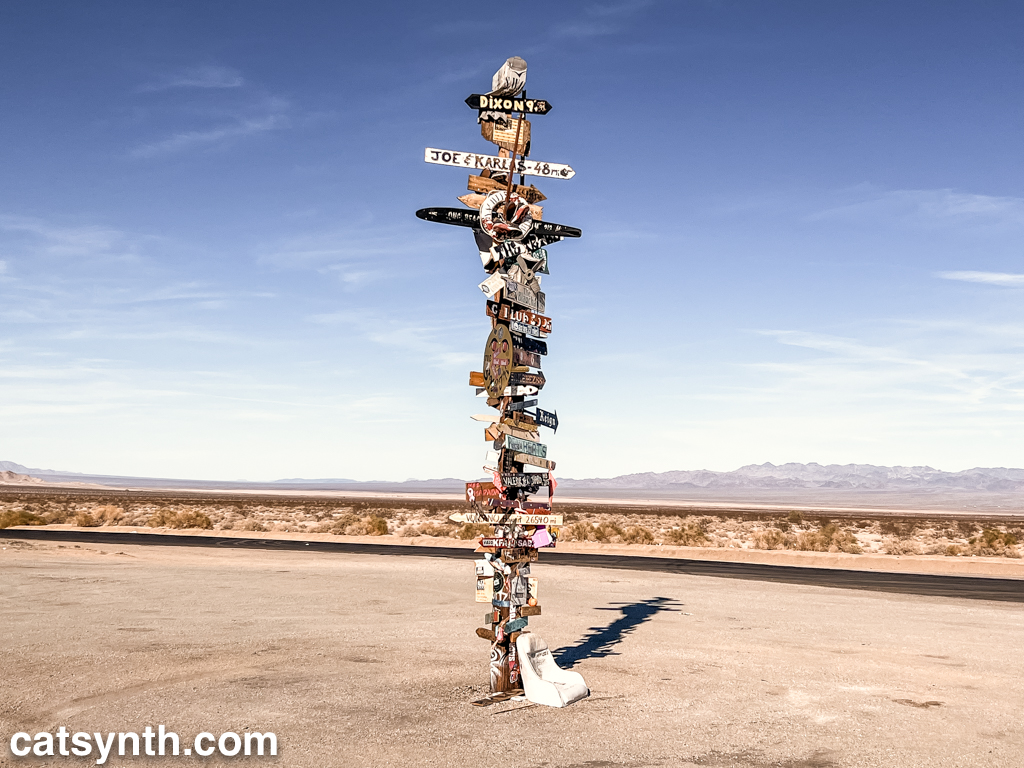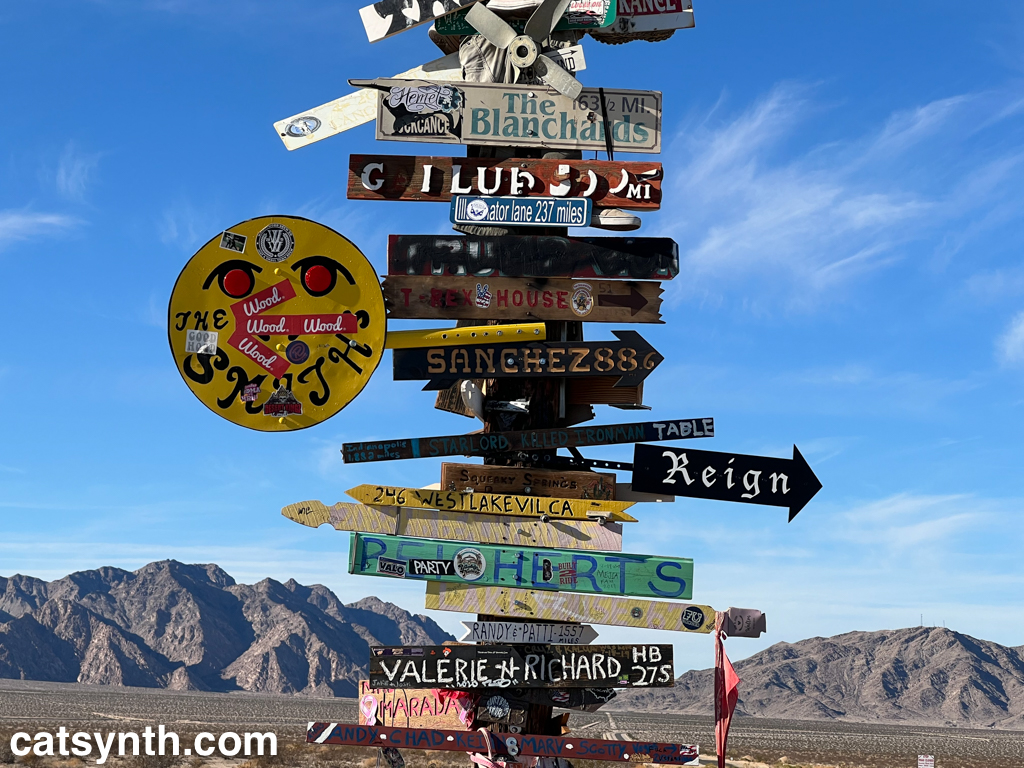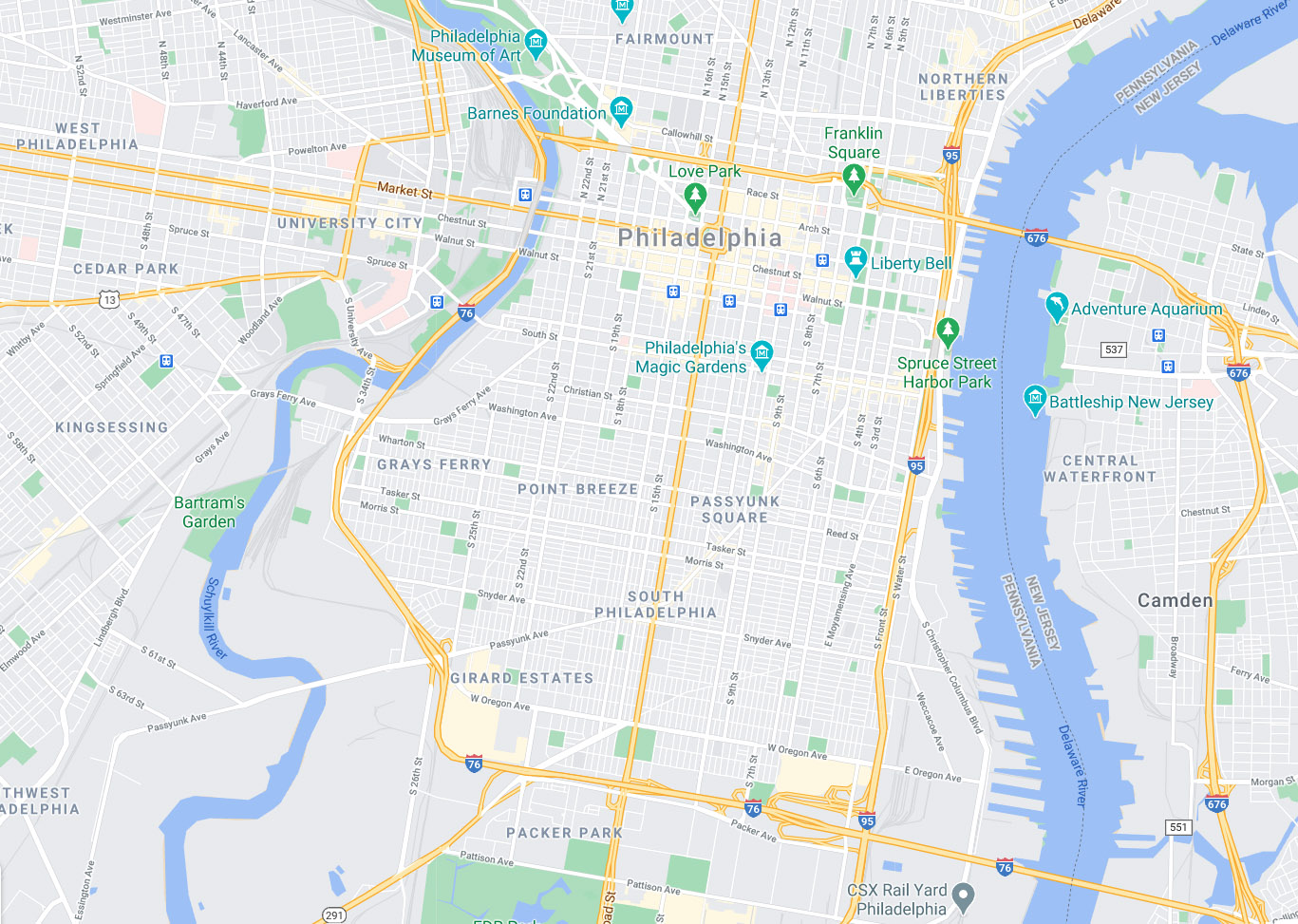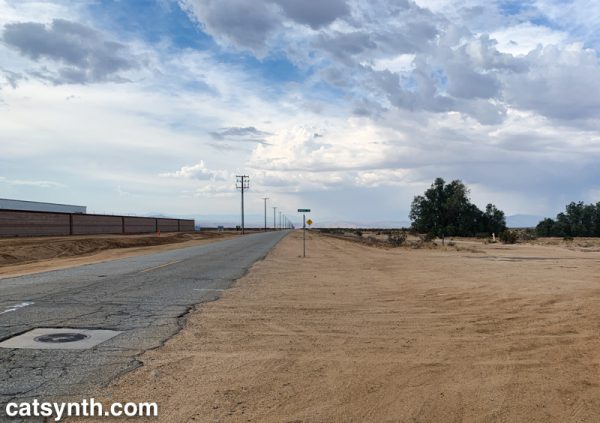
The Rice Desert Sign on Highway 62 in California.



Philadelphia has played an important role for us at CatSynth this year, musically, personally, and now politically. All eyes have been on this city the last few days, and this morning they delivered the crucial votes to call the presidential election.



 Downtown Philadelphia lies between two rivers, the larger Delaware and the smaller Schuykill. It is further boxed in by three major freeways, I-95, I-76, and I-676 / US 30. Just south if I-676 (which enters the city from the east on the Benjamin Franklin Bridge from New Jersey) are the famous historic sites including Independence Hall, where both the Declaration of Independence and the U.S. Constitution where written.
Downtown Philadelphia lies between two rivers, the larger Delaware and the smaller Schuykill. It is further boxed in by three major freeways, I-95, I-76, and I-676 / US 30. Just south if I-676 (which enters the city from the east on the Benjamin Franklin Bridge from New Jersey) are the famous historic sites including Independence Hall, where both the Declaration of Independence and the U.S. Constitution where written.

But modern city is much more than these historic sites, revered as they are. It is one of the largest cities in the country and has its own unique culture. Great seafood, Italian food, and of course cheesesteaks. Also some important centers for modern art and architecture. There is the neo-classical Philadelphia Museum of Art (made famous by Rocky) but also the modernist Institute of Contemporary Art and the University of Pennsylvania.

In addition to the facade of the museum, I like the modernist buildings nearby which are presumably part of the university. (Hey, didn’t someone supposedly graduate from Penn/ Wharton?).
And nestled among the tall buildings of downtown Philly is the Love sculpture by Robert Indiana. Originally part of the 1976 bicentennial celebrations in “the city of brotherly love”, it is now a permanent fixture in the city.

Philadelphia is one of the larger and denser cities in the country, more akin to New York than to Los Angeles.

One of the more famous skyscrapers is the PSFS building. Now a hotel, it was once a the headquarters of the Philadelphia Savings Fund Society. It is an official landmark.

Of course, we would be remiss if we did not talk about the city’s music. In particular, I have a soft spot for Philly soul of the 1970s, as exemplified by the band MSFB.
They were the house band of Philadelphia Sigma Sound Studios, the seminal house for the city’s particular sound, heavy on strings and detailed production. In addition to MSFB, they spawned many important acts like the O’Jays, the Spinners, the Delfonics and Stylistics, many of whom worked with the great producer Philadelphia producer Thom Bell. The sound and musicians of the city also attracted so called “blue-eyed soul”, such as David Bowie’s Young Americans album, and Elton John’s hit Philadelphia Freedom which was recorded with MFSB. The latter truly seems like song for this moment of celebration.
Many great jazz and funk musicians also came out of Philadelphia and call the city their home. Among them is the drummer G Calvin Weston who worked with Ornette Coleman’s Prime Time, James Blood Ulmer, the Lounge Lizards and more. And he is working with me on my latest musical project as well. You can hear about his history and many other musicians from Philadelphia in our extended interview with him from this summer.
He has been adding the “icing on the cake” to several tracks on my new album scheduled to release in early January, hopefully in time for change of power in our country. But for the moment, I would just like to say how proud I am of the city of Philadelphia and to call them my friends.

Intersection looking north towards the horizon in California City.
You can see our past Wordless Wednesdays here.